Ukrainian design brand Faina opens Antwerp gallery
Kyiv-based Yakusha Design has created a cavernous interior for a new Antwerp space showcasing its furniture collections under the Faina label
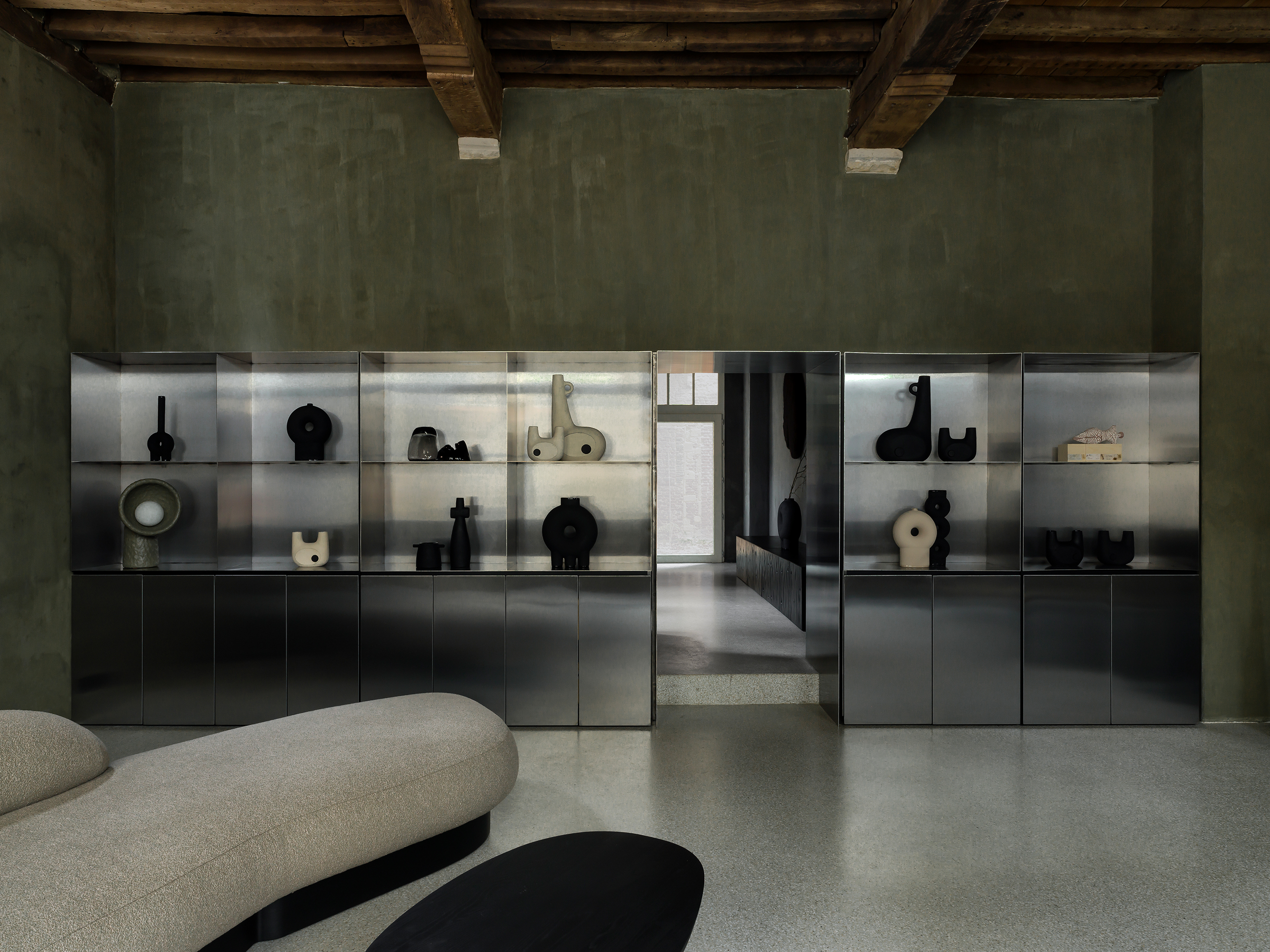
Piet-Albert Goethals - Photography
Rooted in Ukrainian cultural heritage, Faina is a furniture brand by Kyiv-based Yakusha Design. Led by Victoria Yakusha, the brand has now opened a new space in Antwerp, Belgium, a cavernous design gallery set within a historical building in the heart of the city.
The gallery is a location where Yakusha aims to demonstrate her ‘live design’ philosophy, based on a strong connection with nature and history. Following this leitmotif, the two minimalist spaces of the gallery are inspired by the earth, with dark tones and designs featuring archetypal forms and natural, sustainable materials throughout.
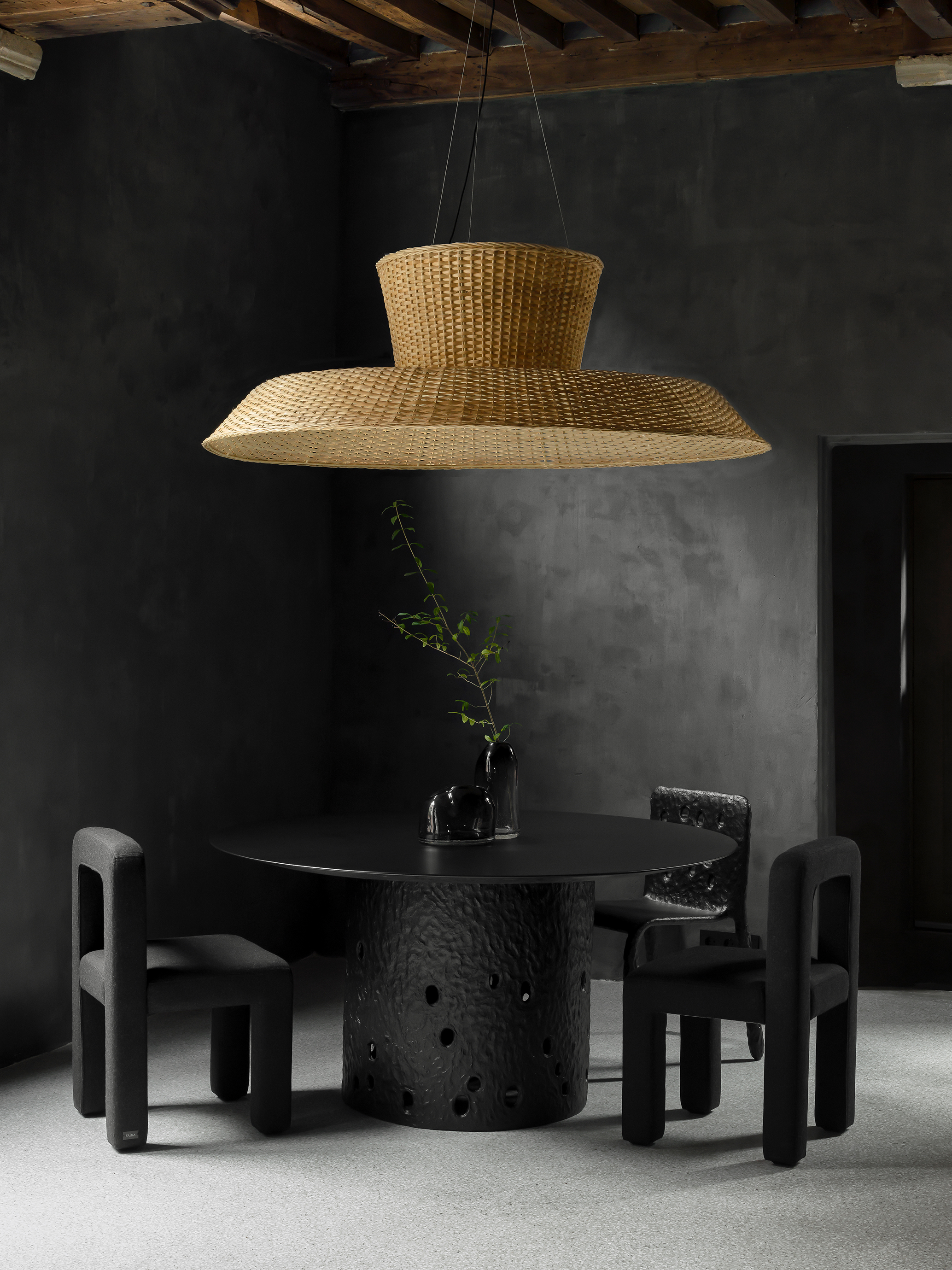
The ‘Strikha’ pendant lamp over the ‘Ztista’ table and ‘Toptun’ chairs
‘We respected the spirit of the space, its history, and didn’t reconstruct much. We left the authentic ceiling, with old beams in their original state. For the walls we just used natural paint so they could breathe,’ explains Yakusha.
The gallery is a backdrop for some of the designer’s best pieces, from softly formed sofas and hand-sculpted lamps to the accessories collection, defined by a series of ceramics and glass pieces displayed on a prominent aluminium bookcase conceived for the space.
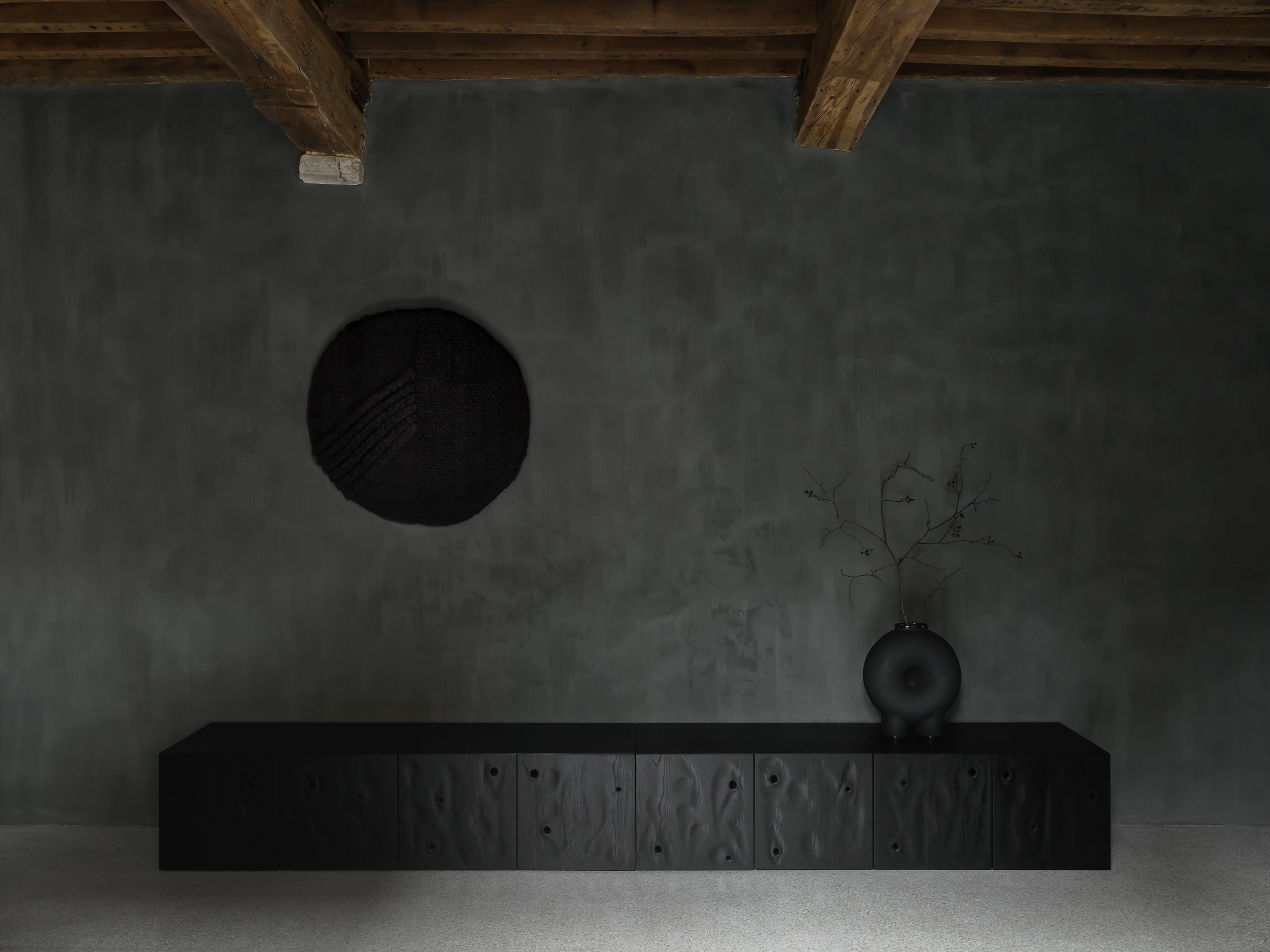
A bespoke tapestry made on an ancient Carpathian loom, hanging on the wall over a black cabinet
The gallery makes its debut with new pieces that explore Ukrainian craft traditions, cultural heritage and symbols. The ‘Strikha’ lamp echoes traditional straw roofs, while the ‘Bandura’ vase is inspired by a folk instrument.
The colours as well as the material palette – clay, wood and wool in dark shades – refer to the hues of Ukrainian soil, and a further connection with Yakusha’s home is made through a tapestry depicting the symbol of earth according to the Trypillian culture, hand-woven on an ancient Carpathian loom.
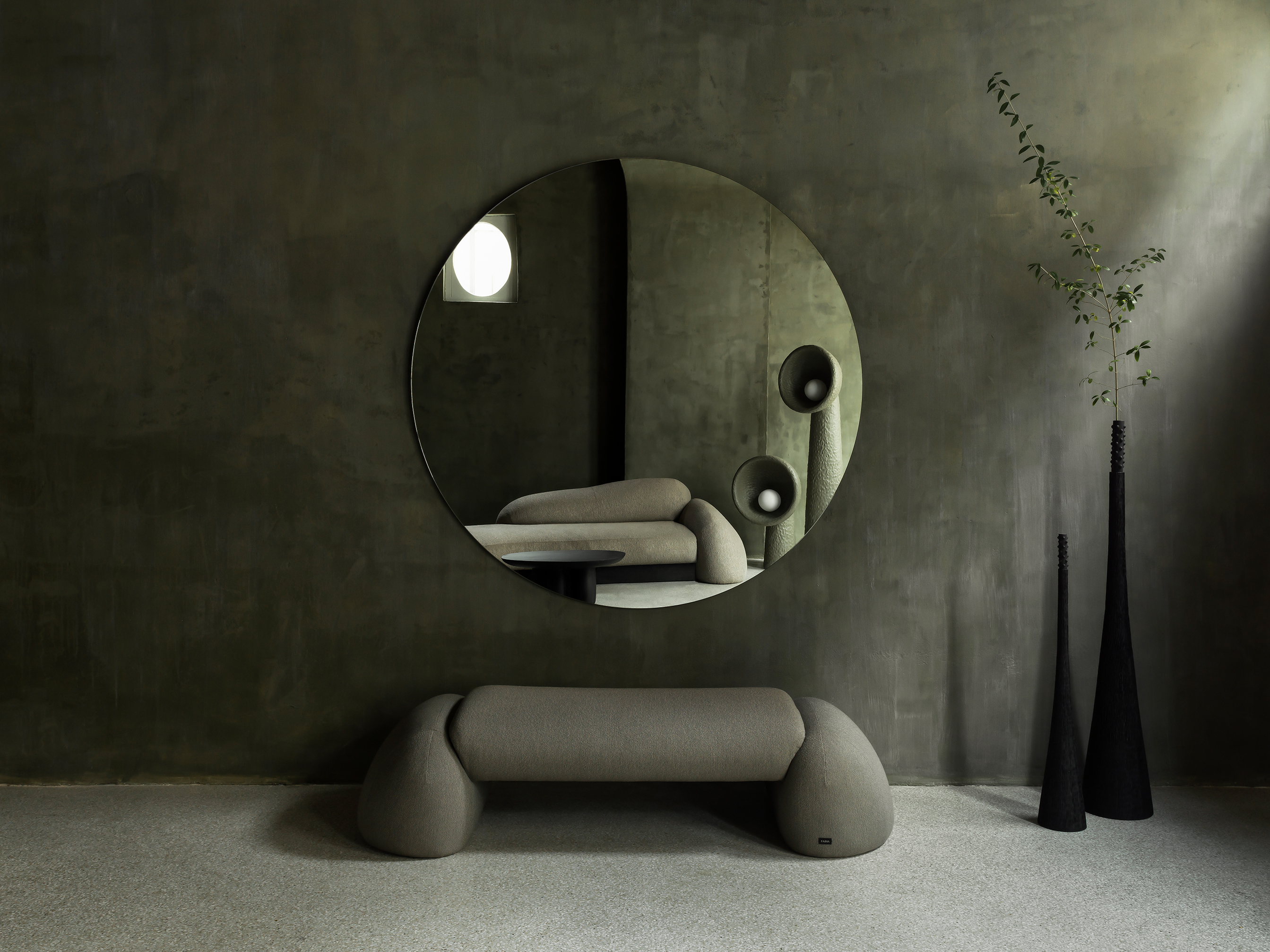
‘Plyn’ banquette
‘With Faina we are driven by the mission to pass on history. We bring artisanal craftsmanship into modern design and revive ancient cultural symbols,’ says Yakusha. ‘Made in a sustainable manner, by hand, primitive archetypal objects tell the story of my land. This is what gives them energy, meaning, and soul.’
Receive our daily digest of inspiration, escapism and design stories from around the world direct to your inbox.
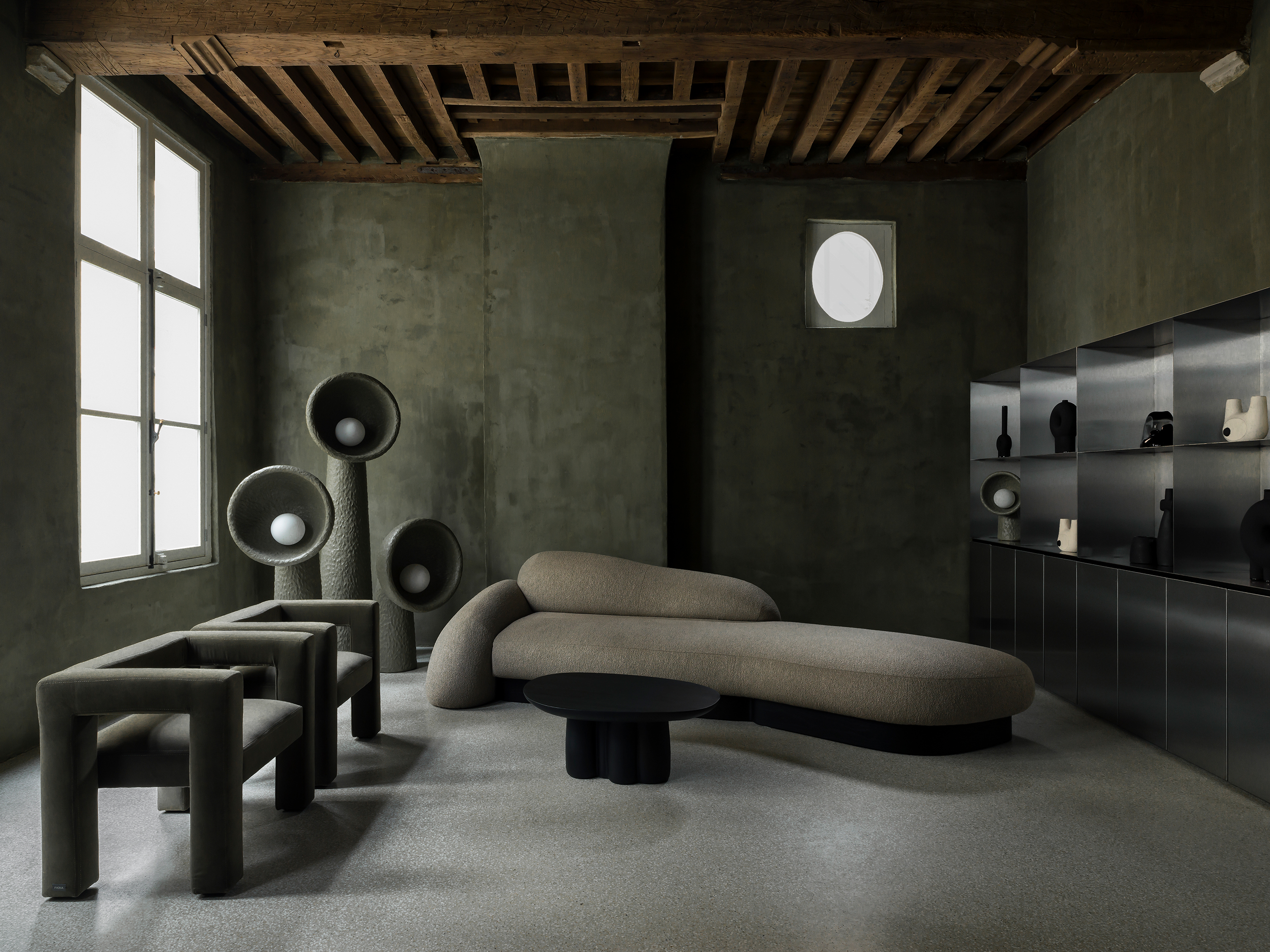
From left: ‘Toptun’ armchairs, ‘Soniah’ floor lamps, ‘Plyn’ sofa and ‘Soniah’ coffee table
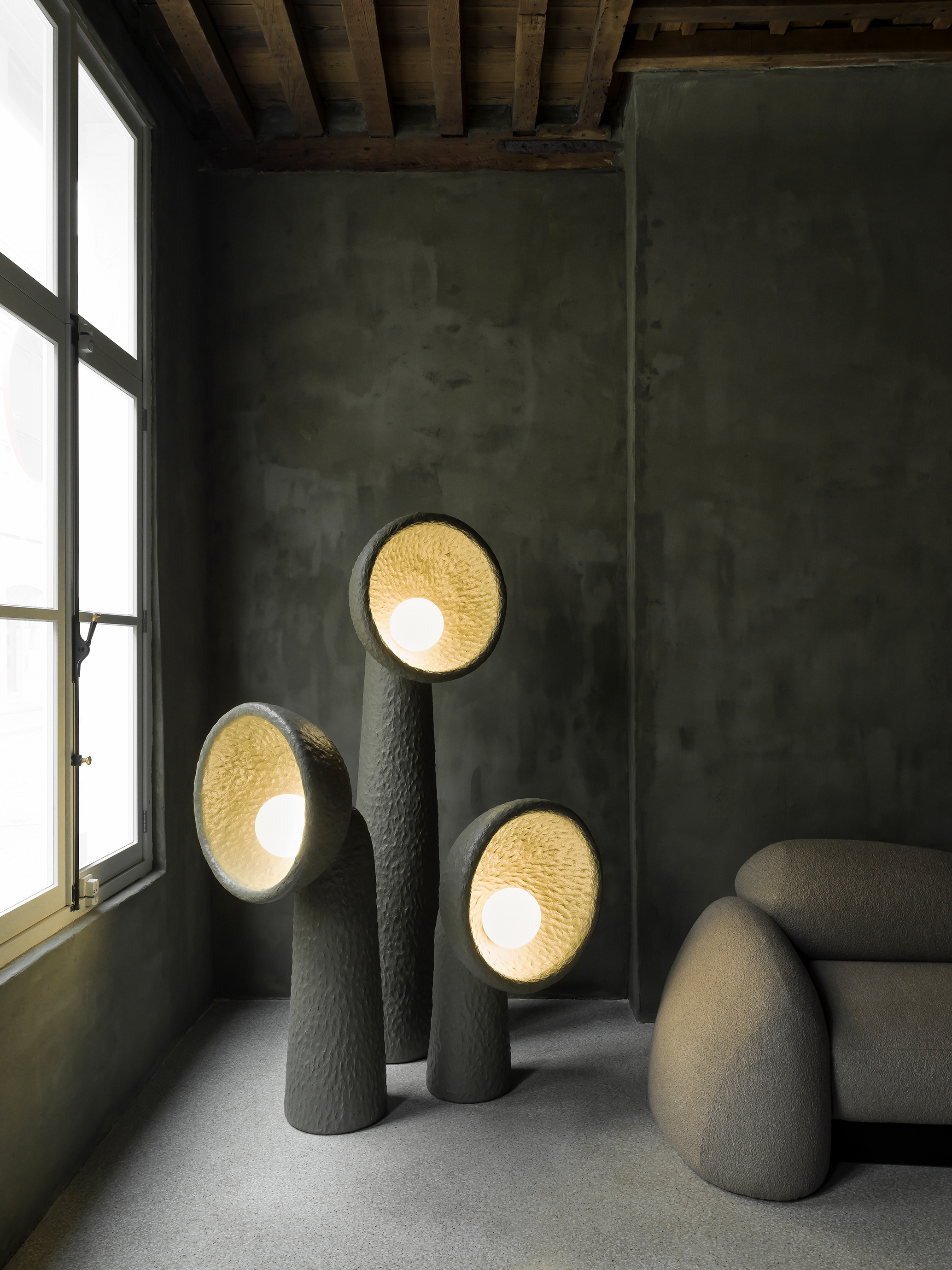
‘Soniah’ floor lamps
INFORMATION
ADDRESS
Keizerstraat 28
2000 Antwerpen
Belgium
Rosa Bertoli was born in Udine, Italy, and now lives in London. Since 2014, she has been the Design Editor of Wallpaper*, where she oversees design content for the print and online editions, as well as special editorial projects. Through her role at Wallpaper*, she has written extensively about all areas of design. Rosa has been speaker and moderator for various design talks and conferences including London Craft Week, Maison & Objet, The Italian Cultural Institute (London), Clippings, Zaha Hadid Design, Kartell and Frieze Art Fair. Rosa has been on judging panels for the Chart Architecture Award, the Dutch Design Awards and the DesignGuild Marks. She has written for numerous English and Italian language publications, and worked as a content and communication consultant for fashion and design brands.
-
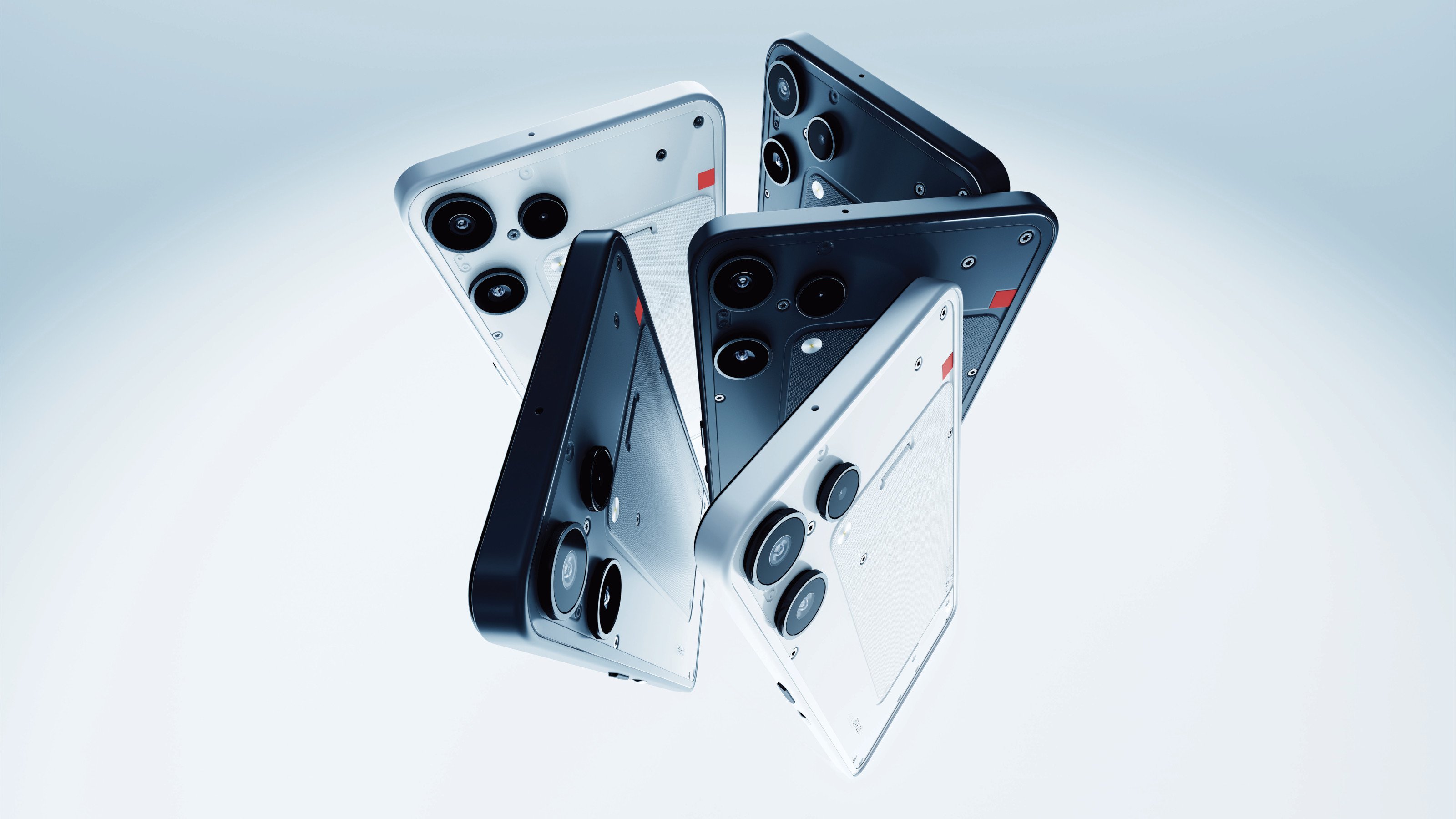 Nothing expands its affordable offering with a new starter smartphone, the Phone (3a) Lite
Nothing expands its affordable offering with a new starter smartphone, the Phone (3a) LitePacking all the familiar Nothing tech tropes into a low-cost, high-powered device, the Nothing Phone (3a) Lite should open up the brand to even more customers
-
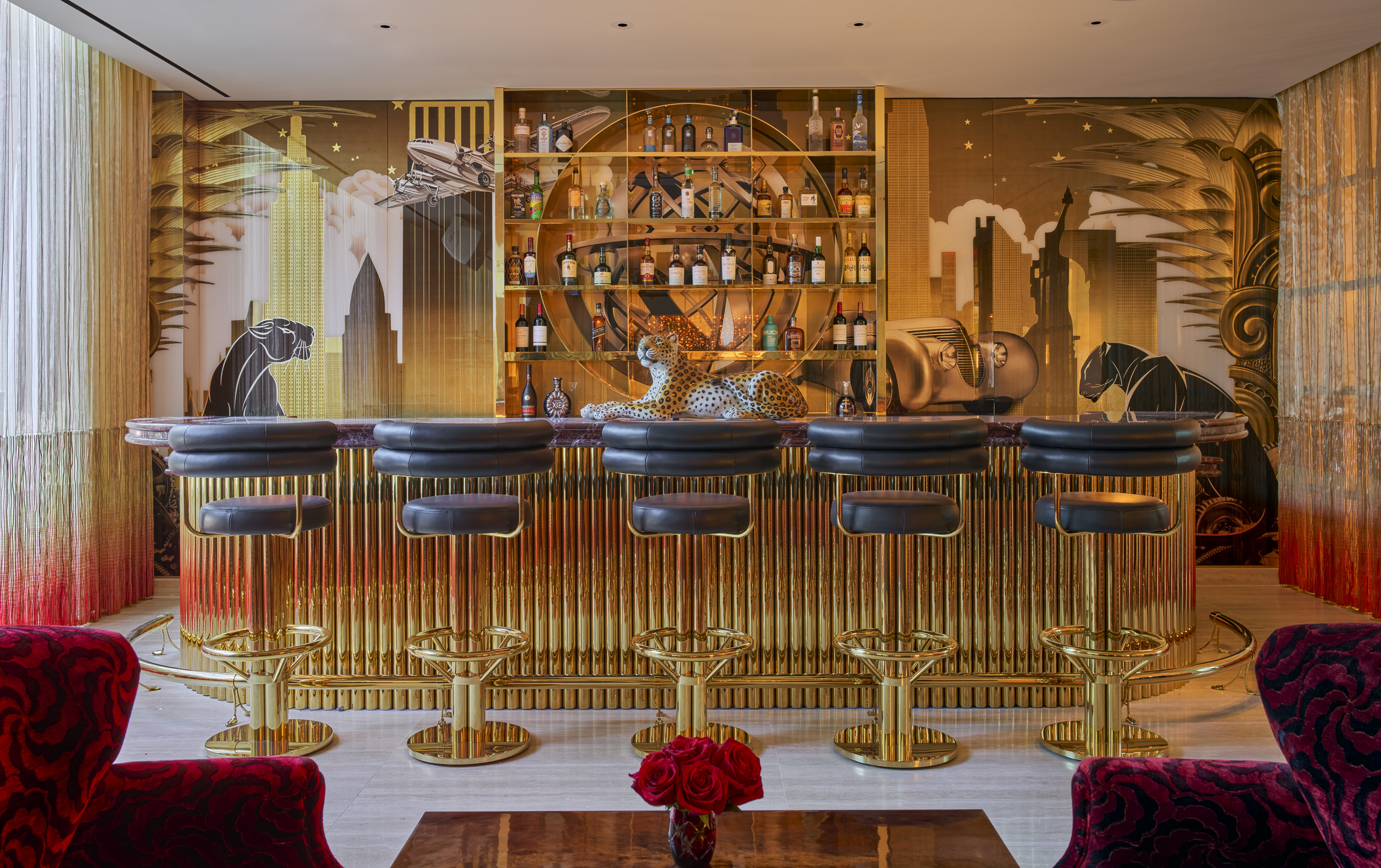 Faena New York just landed in the Big Apple – and it's an excuse for a good time
Faena New York just landed in the Big Apple – and it's an excuse for a good timeArgentine hotelier Alan Faena’s first New York address serves up high-octane hospitality with a dash of leopard print
-
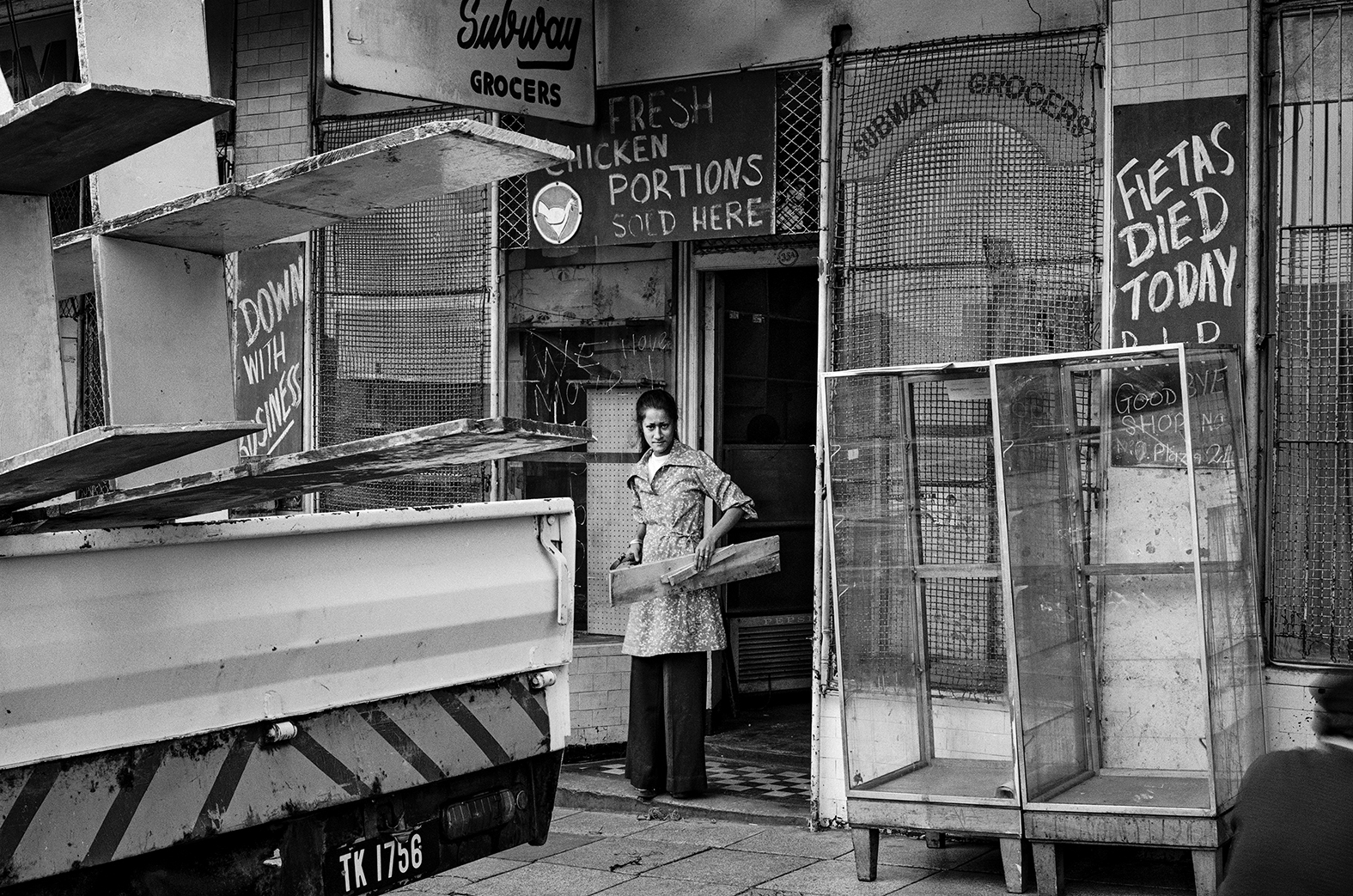 David Goldblatt captures intimate portraits of Johannesburg during apartheid
David Goldblatt captures intimate portraits of Johannesburg during apartheidBetween 1948 and 2016, David Goldblatt returned periodically to Fietas, a suburb in the west of Johannesburg’s city centre, to photograph the impact of apartheid legislation on its residents and landscape. The resulting photographs have now been collected and published for the first time